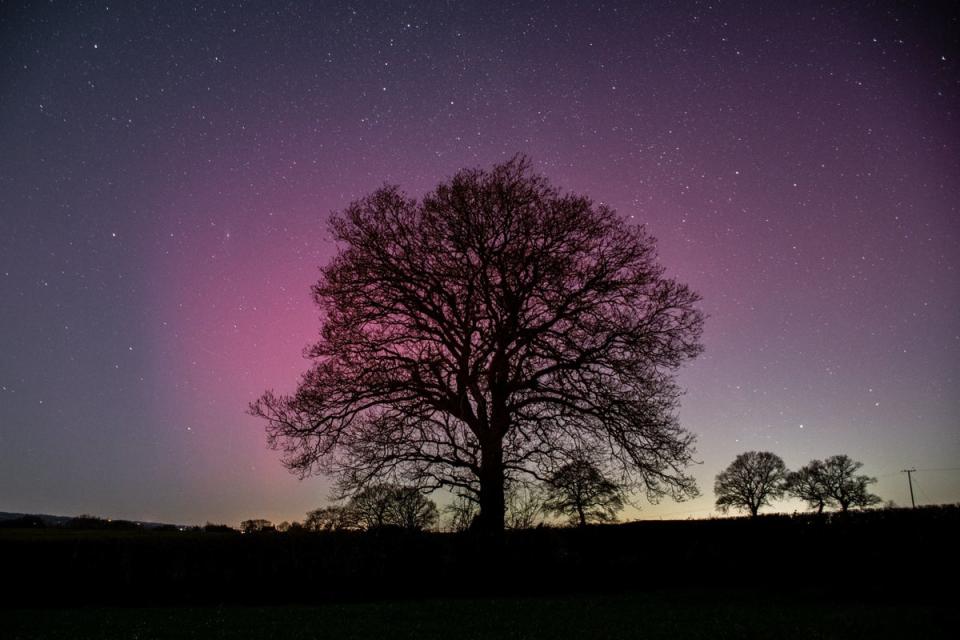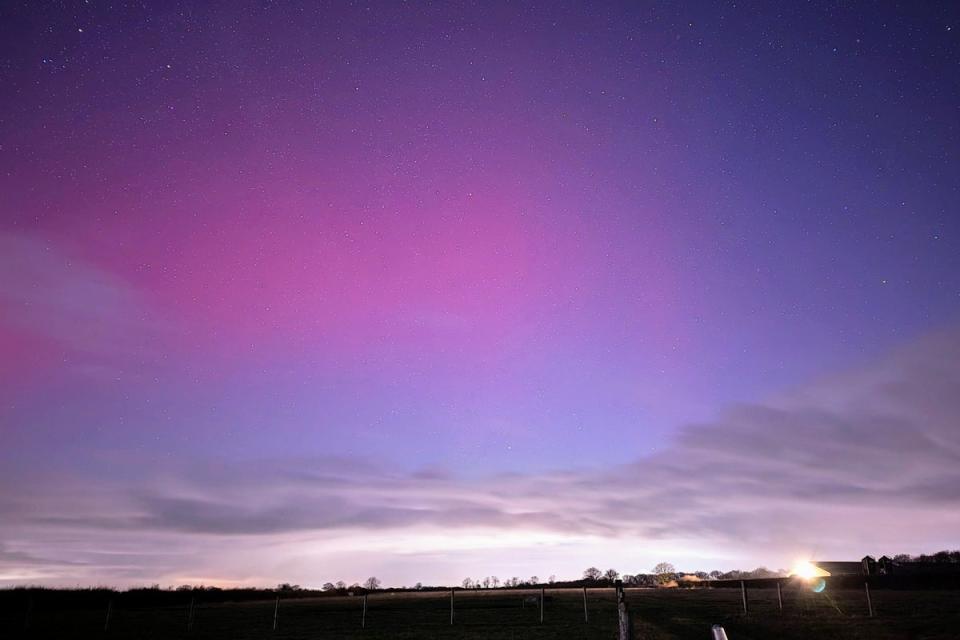Aurora Borealis: Stunning Northern Lights appear in rare display over Southern England

The Northern Lights were incredibly visible in the south of England last night as a rare cosmic flare boosted the natural wonder.
The Aurora Borealis could be spotted again in the UK on Monday night if skies are clear, according to The Met Office.
UK Weather: Aurora Borealis: Stunning Northern Lights










The natural phenomenon is normally confined to Scotland and parts of northern England but on a clear Sunday night it could be seen appearing as a purple glow as far south as Cambridgeshire.
A coronal hole high speed stream arrived this evening combined with a rather fast coronal mass ejection leading to #Aurora sightings across the UK@MadMike123 in North Uist@Jon9tea in North Wales@paulhaworth in Cambridgeshire@alex_murison in Shropshire pic.twitter.com/8JhqxPbcFK
— Met Office (@metoffice) February 26, 2023
The lights were also dramatically visible to the naked eye dancing over skies in Kent and Cornwall on Sunday night, due to a particularly strong solar flare, known as a coronal mass ejection.

The Met Office tweeted a series of pictures taken by members of the public which captured the light phenomenon in North Uist in Scotland, North Wales, Cambridgeshire and Shropshire.
The lights were even spotted flickering dramatically over Stonehenge near Salisbury.
The Northern Lights over Stonehenge last night 😲😍❤️💚💙💛 📷 credit by Stonehenge Drone scapes on FB#Aurora #auroraborealis #northernlights #stonehenge #stars #astro #OMG #beautiful pic.twitter.com/YNgROjYPr6
— Stonehenge U.K (@ST0NEHENGE) February 27, 2023
The Northern Lights are created by disturbances in Earth’s magnetosphere, the region of space surrounding earth where the earth’s magnetic field dominates that of space.

These disturbances are caused by a flow of particles from the Sun and are usually concentrated around the Earth’s magnetic poles.
The southward shift of the lights on Sunday is caused by an ejection of plasma which is known as a Coronal Mass Ejection (CME) from the Sun.
Unfortunately, high levels of light pollution mean that Londoners are unable to catch a glimpse of the stunning phenomenon.

 Yahoo News
Yahoo News 
